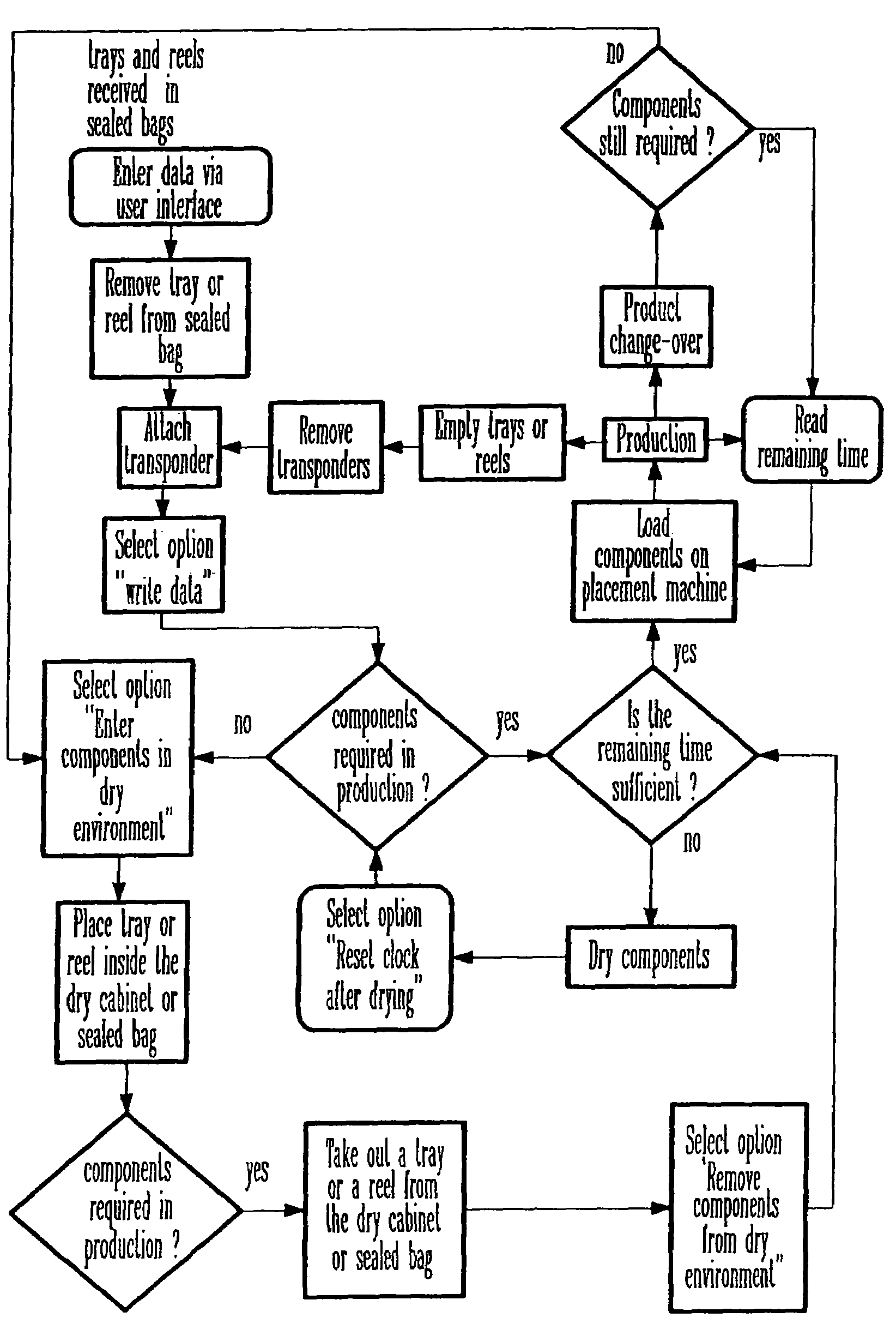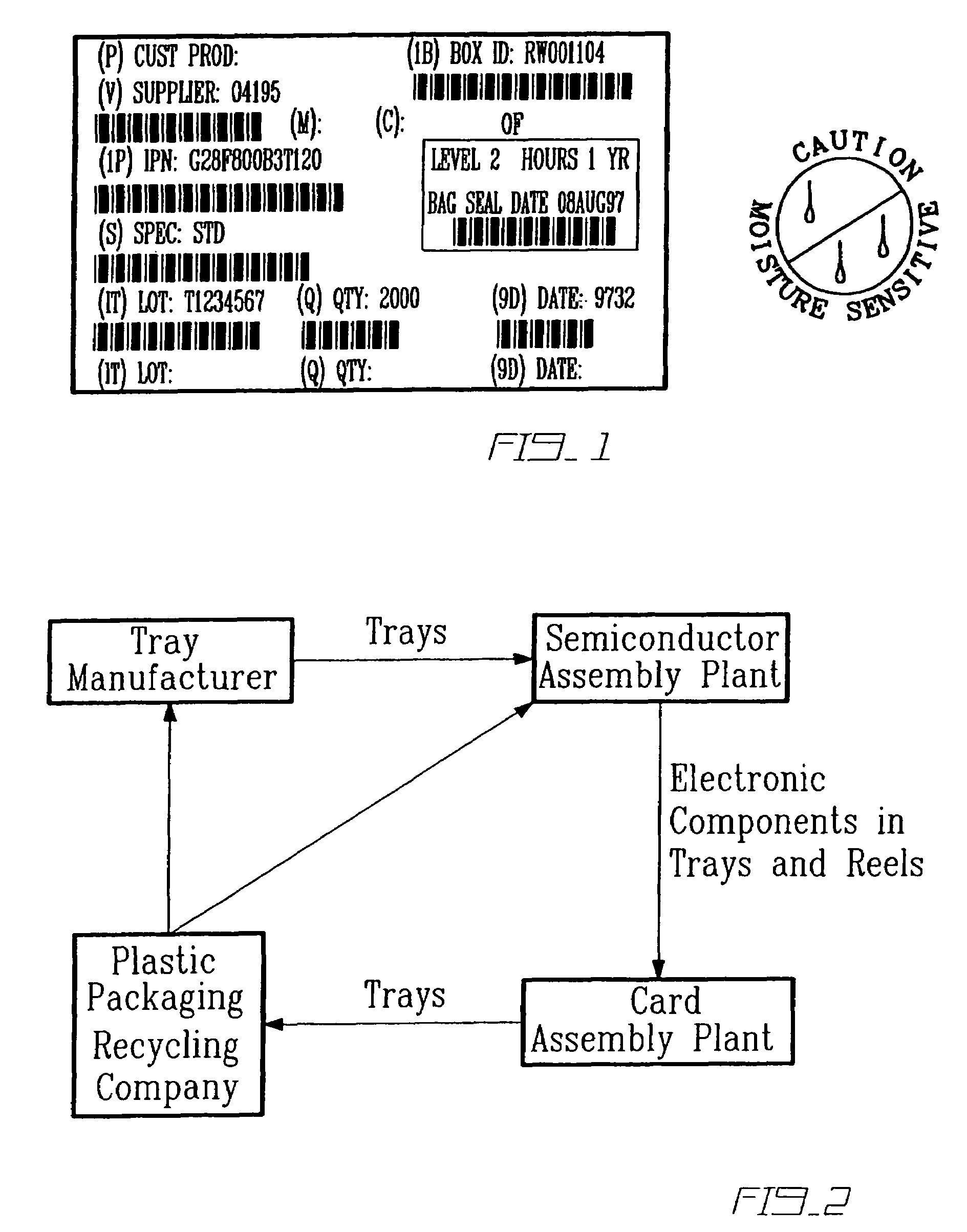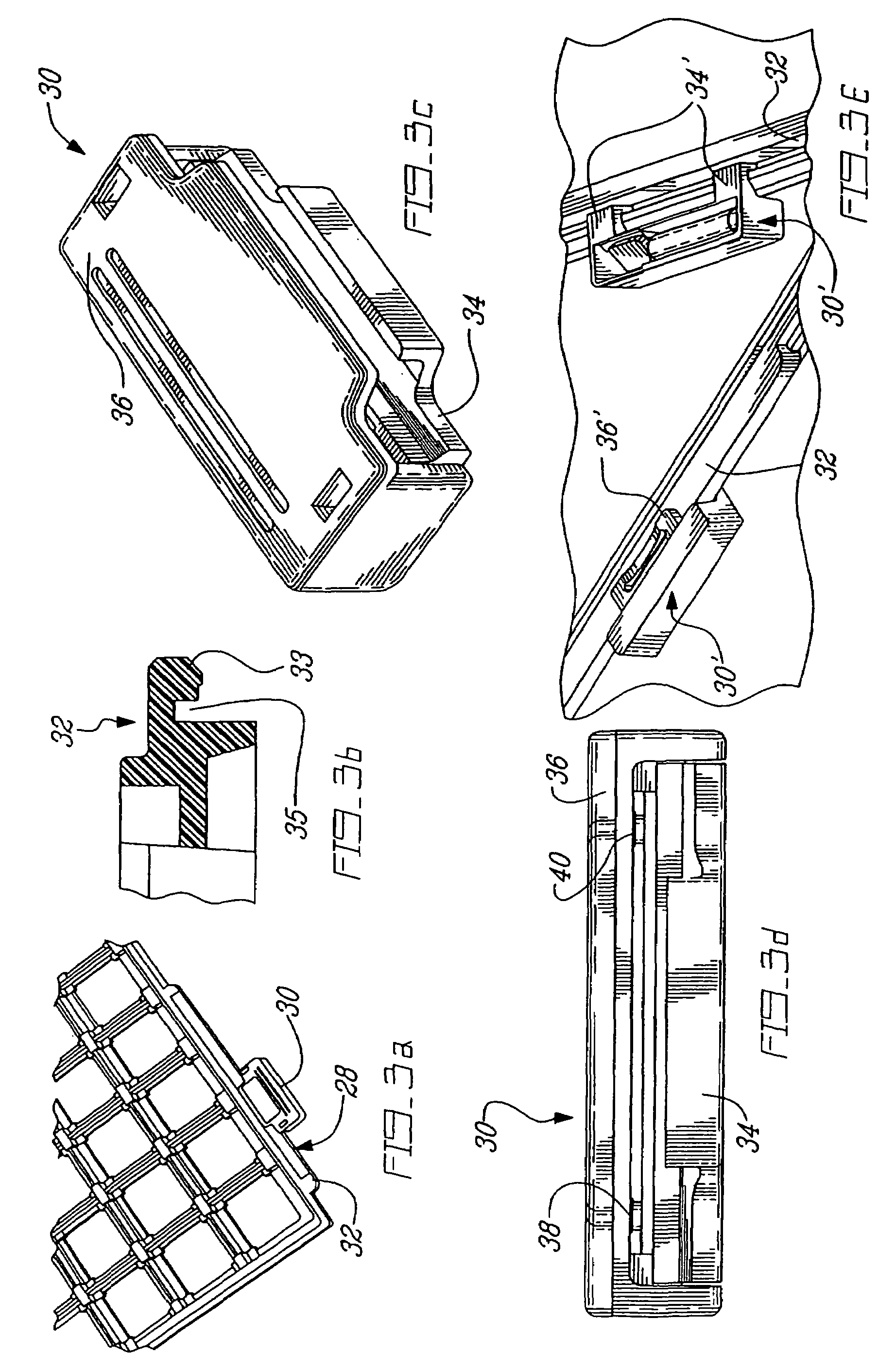Automated manufacturing control system
a manufacturing control and automatic technology, applied in the field of industrial automation, can solve the problems of large flat area, inability to apply barcode labels on raw materials, and inability to meet the requirements of outgoing production, and achieve the goal of complete automation of reading operations
- Summary
- Abstract
- Description
- Claims
- Application Information
AI Technical Summary
Benefits of technology
Problems solved by technology
Method used
Image
Examples
1st example
1st Example
Transponders on Reels and Trays
[0096]Given the existing infrastructure of barcode identification and the relatively high unit cost of a typical transponder, the present example is based on the use of a temporary means to attach the transponder, with different designs adapted to each format of packaging. In this case, the transponders 12 (i.e. the chip and the coupling element) are used in a closed loop cycle. For this reason, the benefits of the system must be more important that the additional cost associated with the attachment and removal of the transponders 12, including the initial data entry. Any application would become even more advantageous if the card assembly plant can receive the reels and trays (FIGS. 3a and 3f) from its suppliers with the transponders 12 already attached thereto and with the data already present in the proper format.
[0097]In this application, it is important that the shape and location of the transponders 12 do not affect the normal handling...
PUM
 Login to View More
Login to View More Abstract
Description
Claims
Application Information
 Login to View More
Login to View More - R&D
- Intellectual Property
- Life Sciences
- Materials
- Tech Scout
- Unparalleled Data Quality
- Higher Quality Content
- 60% Fewer Hallucinations
Browse by: Latest US Patents, China's latest patents, Technical Efficacy Thesaurus, Application Domain, Technology Topic, Popular Technical Reports.
© 2025 PatSnap. All rights reserved.Legal|Privacy policy|Modern Slavery Act Transparency Statement|Sitemap|About US| Contact US: help@patsnap.com



